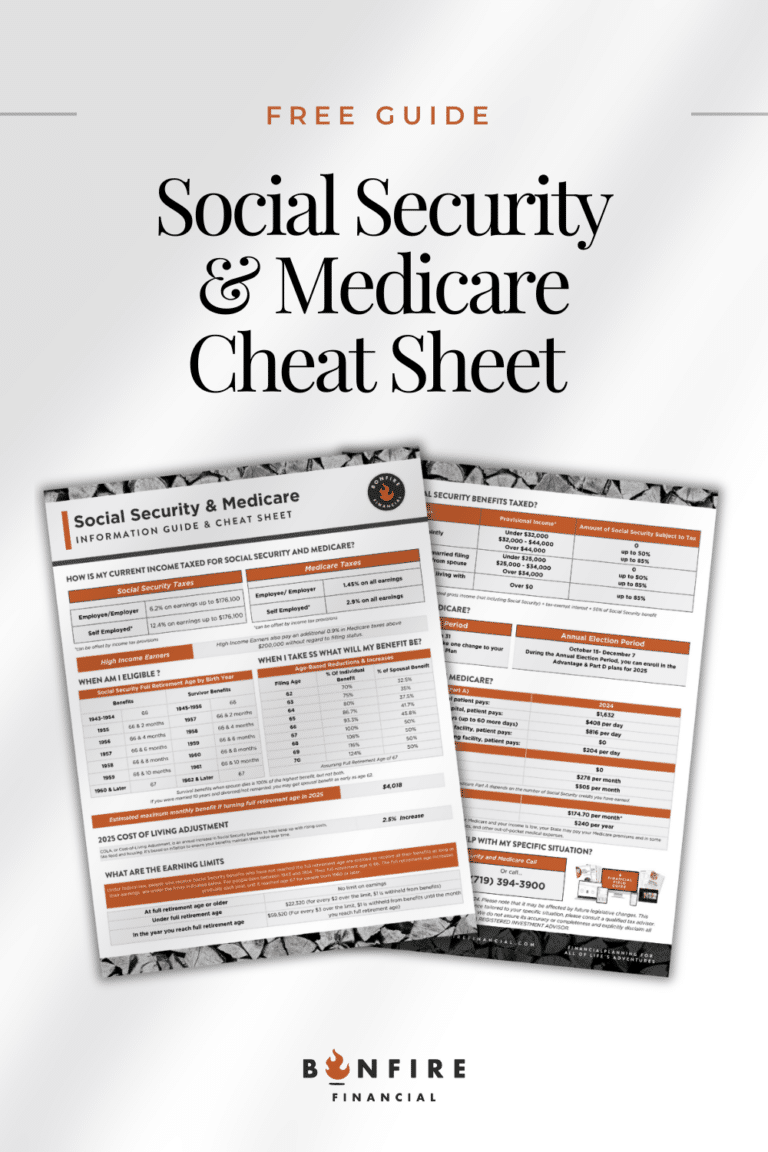Tax Opportunities in the Big Beautiful Bill
The passage of the One Big Beautiful Bill Act marked a major shift in retirement and tax planning strategies across the country. Officially passed in 2024, this sweeping legislation introduced the Big Beautiful Bill tax cuts, which have far-reaching implications for retirees, pre-retirees, and anyone looking to secure a more tax-efficient financial future.
Today, we’re breaking down the most important elements of the Big Beautiful Bill tax cuts and what they mean for your financial plan. Whether you are already retired or planning to retire soon, this guide will help you understand the new rules and show you how to take advantage of them.
Listen Now: iTunes | Spotify | iHeartRadio | Amazon Music
Why the Big Beautiful Bill Tax Cuts Matter
Tax policy affects every part of your retirement plan, from how much you pay now to how much you get to keep later. The One Big Beautiful Bill Act has made several changes that reward proactive planning, particularly for those who understand how to leverage deductions, tax brackets, and Roth conversions.
If you are wondering what the headlines mean for you, read on. The Big Beautiful Bill tax cuts could offer you significant opportunities, but only if you act before key provisions sunset.
Locked-In Tax Brackets: Clarity for Long-Term Planning
One of the standout provisions of the bill is the permanent locking in of the 2017 tax brackets. This includes:
- Expansion of the 24 percent tax bracket
- Continuation of higher standard deductions
For retirees, this is big news. Why? Because it removes the uncertainty surrounding tax bracket “sunsets” that were originally baked into earlier tax law changes. With stable brackets, you can now plan with confidence for the years ahead.
This consistency is especially helpful for strategies like Roth conversions, where timing and tax bracket forecasting are critical. Knowing your future tax rates allows you to take deliberate action now, instead of speculating on what might happen years down the road.
In addition to Roth conversions, having locked-in brackets makes income planning, charitable giving, and capital gains strategies more effective. Retirees can plan their withdrawals with more precision, minimizing tax surprises and maximizing tax-efficient income streams.
Action Steps:
- Review your current and projected retirement income
- Work with your financial advisor to determine if partial Roth conversions make sense given your new bracket stability
SALT Deduction Increase: A Temporary but Valuable Window
The One Big Beautiful Bill Act also increases the State and Local Tax (SALT) deduction cap from 10,000 to 40,000. This expanded deduction is significant, but it comes with an expiration date of 2028.
This change is especially beneficial to taxpayers in high-tax states or those with incomes under 500,000. If you are thinking about accelerating deductible expenses, making charitable contributions, or converting traditional retirement accounts to Roth IRAs, this higher deduction gives you more room to maneuver.
In many cases, combining the higher SALT deduction with strategic Roth conversions can result in substantial long-term tax savings. By using the deduction to offset taxable income from conversions, retirees may be able to shift significant assets into Roth accounts with a lower immediate tax cost.
Action Steps:
- Calculate your itemized deductions for 2025 through 2027
- See if bundling deductions, charitable giving, or Roth conversions during this window will help you take full advantage
Bigger Standard Deductions for Seniors
If you are over age 65, the Big Beautiful Bill tax cuts get even better. The Act includes an additional standard deduction of:
- 6,000 for individuals
- 12,000 for married couples filing jointly
This increase is stacked on top of the regular standard deduction, further lowering your taxable income. For retirees, this can create a strategic opening to convert traditional retirement accounts to Roth IRAs while remaining in a lower bracket.
Remember, money in Roth accounts grows tax-free and is not subject to required minimum distributions (RMDs). With higher deductions, you can potentially convert more without pushing yourself into a higher bracket.
Additionally, this larger deduction makes it easier for retirees to avoid paying taxes on Social Security benefits or capital gains. When properly planned, these tax savings can compound year after year.
Action Steps:
- If you are 65 or older, review your adjusted gross income (AGI) and consider Roth conversions or harvesting gains within the new deduction limits
Estate Tax Exemption Increase: Breathing Room for Legacy Planning
Another major highlight of the One Big Beautiful Bill Act is the increase in the estate tax exemption to 15 million per individual or 30 million per couple. This move takes estate tax concerns off the table for the vast majority of Americans.
If your estate is approaching that threshold, now is the time to take advantage of gifting strategies, trusts, and other estate planning tools while the exemption is still high. There is always a possibility that future legislation could reduce this exemption, making it critical to act while the current rules are in place.
You can also use this time to transfer assets to heirs in a tax-efficient way, locking in current valuation levels and removing future growth from your taxable estate.
Action Steps:
- Speak to your estate attorney or advisor about legacy planning strategies, especially if you own appreciating assets or a business
Medicare and Social Security: Future Uncertainties
While the Big Beautiful Bill tax cuts have many upsides, there are whispers of future funding issues related to Medicare and Social Security. The bill opens the door for potential restructuring in the coming years.
The concern? Future generations might face increased retirement ages or income-based benefit reductions. However, the majority of current beneficiaries likely will not see cuts anytime soon.
The political reality is that seniors make up a significant portion of the voting population, making it unlikely that Congress would enact sweeping cuts that affect current retirees. Still, it is wise to remain aware and plan accordingly.
Action Steps:
- Continue monitoring Medicare and Social Security changes, but do not make major adjustments based on speculation
- Keep your retirement plan updated annually to account for any changes
Additional Planning Tips to Maximize the Big Beautiful Bill Tax Cuts
- Bunch Deductions Strategically: Use years with higher income or conversions to bunch deductions like charitable contributions and medical expenses.
- Harvest Capital Gains: Consider realizing long-term capital gains up to the top of the 0 or 15 percent capital gains bracket.
- Leverage Donor-Advised Funds: Use Donor-Advised Funds to frontload multiple years of giving while maximizing itemized deductions.
- Set Up Qualified Charitable Distributions (QCDs): If you are 70.5 or older, you can donate directly from your IRA to a qualified charity, reducing your taxable income.
- Coordinate With Your CPA: Tax efficiency is best achieved when your advisor and CPA work together on a comprehensive strategy.
Key Takeaways and Next Steps
Here are the biggest things to remember about the Big Beautiful Bill tax cuts:
- Locked-in tax brackets allow for more confident long-term tax planning.
- The expanded SALT deduction is a limited-time opportunity that expires in 2028.
- Bigger standard deductions for seniors can create room for strategic income moves.
- Estate tax exemption increase provides flexibility in legacy planning.
- Stay grounded when it comes to Medicare and Social Security projections.
- Use this window of opportunity to be proactive with Roth conversions, charitable giving, and estate planning.
What You Can Do Right Now:
- Schedule a retirement planning session with a qualified financial advisor
- Run projections for Roth conversions over the next three to five years
- Update your estate plan to reflect the new exemption amounts
Take advantage of expanded deductions while they are still available - Coordinate tax strategies with your financial advisor and CPA for maximum benefit
Final Thoughts: Use the Big Beautiful Bill Tax Cuts to Your Advantage
Legislation like the One Big Beautiful Bill Act does not come along often, and when it does, the people who benefit most are those who act early and plan smart.
These tax cuts and deduction increases open a door for retirees to reduce tax burdens, preserve wealth, and create a more stable financial future. But these benefits will not last forever. With some provisions sunsetting in just a few years, now is the time to take action.
At Bonfire Financial, we specialize in helping retirees and pre-retirees build smart, tax-optimized financial plans. If you are unsure how to take advantage of the Big Beautiful Bill tax cuts, we are here to help.
>>> Schedule your personalized planning session today!
Stay informed, stay empowered, and make the most of every opportunity the One Big Beautiful Bill Act has to offer.
 Client Login
Client Login







